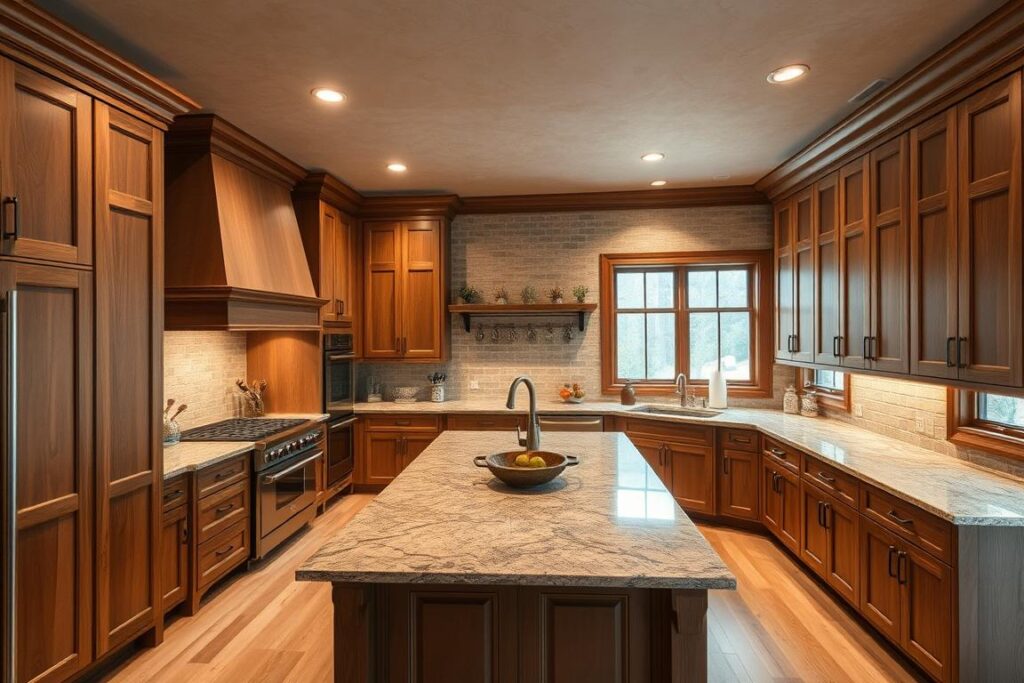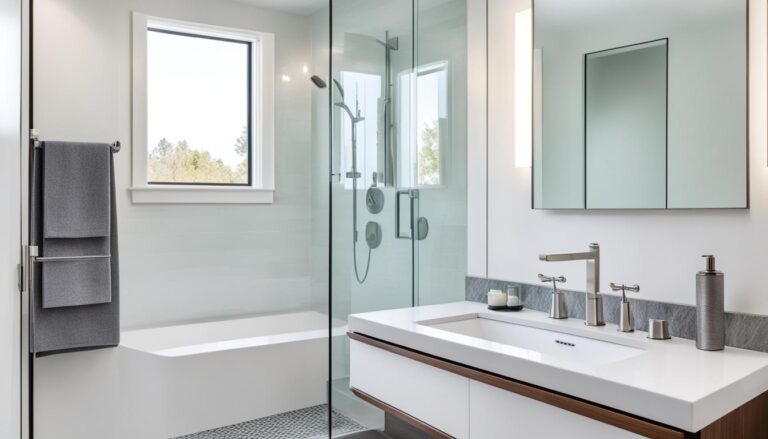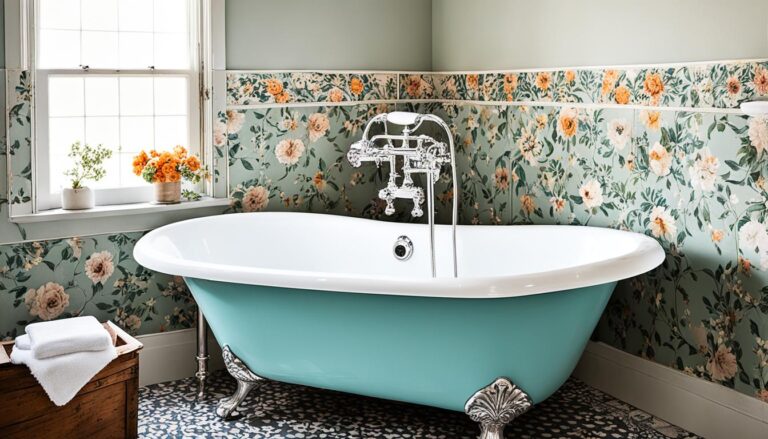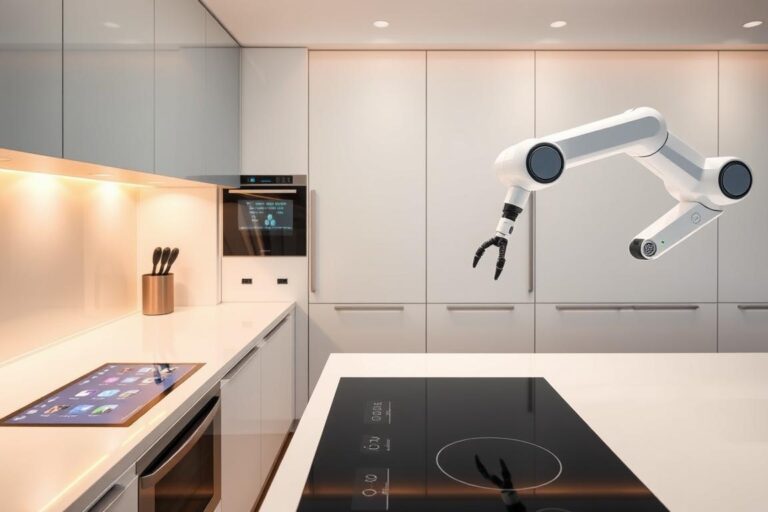We’re excited to share our expertise on creating an acoustic kitchen design. This design combines functionality with exceptional sound quality. You’ll learn how to make a space perfect for entertaining and everyday living.
We focus on acoustic kitchen design. We’ll guide you through designing a kitchen that meets your unique needs. For inspiration and guidance on kitchen remodeling, visit our website at acoustic kitchen design services.
When designing a kitchen, it’s key to think about the sound. The right ideas and tips can make your kitchen enjoyable. Whether for big gatherings or daily meals, we’ve got you covered.
Key Takeaways
- Acoustic kitchen design is crucial for creating a functional and enjoyable space.
- Soundproof kitchen ideas can help minimize echo and improve sound quality.
- Noise-reducing tips can make a significant difference in the overall ambiance of your kitchen.
- A well-designed acoustic kitchen can enhance your entertaining experience and daily living.
- Our guide will provide you with the expertise and knowledge to create your perfect acoustic kitchen.
- Understanding user interaction with space is vital for practical kitchen designs that enhance user experiences.
- Approximately 80% of kitchen implementations emphasize the importance of effective lighting, including task, accent, and natural light sources, which can also impact acoustic performance.
Understanding the Importance of Acoustic Kitchen Design
Acoustic kitchen design is key to a comfy and useful space. It’s important to reduce kitchen noise to avoid health problems and improve work. Using the right materials and designs can make your kitchen quieter and better.
Kitchens often face issues like echo and reverberation, making noise seem louder. To fix this, adding sound-absorbing panels and smart furniture placement is needed. This makes cooking and hanging out in the kitchen more enjoyable.
Acoustic kitchen design offers many benefits, such as:
- Improved speech clarity
- Lower noise levels
- A better kitchen atmosphere
By using the right materials and designs, kitchens become both useful and cozy. We’ll look into how to make kitchens quieter and more pleasant. This includes remodeling and using sound-absorbing panels.
Key Principles of Acoustic Design
Creating a nice sound in kitchens involves several important steps. High-quality sound absorption is key to cut down kitchen noise. This makes the space better for cooking and hanging out.
Installing acoustic panels on kitchen walls is a smart move. They help reduce sound echoes and boost sound quality.
Knowing the science behind sound design is vital. It helps choose the right materials and layout. This way, kitchens look and sound amazing. It’s not just about less noise; it’s about making the space fun to be in.
- Sound absorption vs. sound reflection: Finding the right balance between these two elements is crucial for creating a pleasant acoustic environment.
- Room shape and layout: The shape and layout of the kitchen can significantly impact sound quality, with open plan layouts often exacerbating acoustic issues.
- High-frequency vs. low-frequency sounds: Different materials and design elements can affect high-frequency and low-frequency sounds in different ways, making it essential to consider both when designing the kitchen.
By using these acoustic design principles, homeowners can make kitchens that are both useful and lovely. They can use acoustic panels, plan layouts carefully, or pick materials wisely. The options for a kitchen that sounds great are endless.
Materials That Enhance Acoustic Performance
Creating a quiet kitchen is all about the materials. At LH Builders Inc., we focus on sound isolation. We suggest using fabric-wrapped acoustic panels to improve sound quality.
Here are some key points for choosing acoustic materials:
- Sound-absorbing wall panels to reduce echo and reverberation
- Choosing the right flooring options to minimize footfall noise
- Innovative ceiling solutions, such as acoustic ceiling tiles or suspended ceilings, to improve sound diffusion
Using the right materials makes kitchens more pleasant and functional. Quiet kitchen design solutions help with communication and reduce stress. They are key for any kitchen renovation.
By adding these materials, kitchens become more peaceful and enjoyable. That’s why we stress the need for sound isolation in kitchen renovations.
| Material | Acoustic Benefit |
|---|---|
| Sound-absorbing wall panels | Reduces echo and reverberation |
| Acoustic ceiling tiles | Improves sound diffusion |
| Mass-loaded vinyl (MLV) | Enhances sound stopping power |
Strategic Layout Planning for Acoustics
When you remodel your kitchen, think about how to reduce noise. It’s important to plan where appliances and workstations go. This helps keep the kitchen quiet and peaceful.
Using acoustic panels on walls can also help. They soak up sound and stop echoes. Plus, special flooring can absorb sound without making the kitchen dirty or unsafe. For more tips on sound in open kitchens, check out this resource.
Here are some tips for better acoustics:
- Put appliances away from where you work to cut down on noise
- Use acoustic panels and sound-absorbing materials to reduce echoes
- Keep kitchen equipment in good shape to avoid loud noises
https://www.youtube.com/watch?v=yKiHxY-xjrk
By following these tips, you can make your kitchen both useful and quiet. Good acoustic design helps everyone talk better. This means fewer mistakes, safer work, and a happier kitchen.
| Acoustic Solution | Benefits |
|---|---|
| Acoustic Panels | Reduce sound reflections, minimize echo |
| Sound-Absorbing Flooring | Reduce noise levels, maintain safety and cleanliness |
| Strategic Appliance Placement | Minimize noise distribution, reduce disruptions |
Kitchen Design Elements That Affect Acoustics
When designing a kitchen, many elements can change how it sounds. We focus on these to offer quiet kitchen design solutions that make the space better. Every choice, from cabinets to appliances, helps in making the kitchen quieter.
To get good sound isolation in kitchen renovations, we must pick the right materials and designs. Countertops, floors, and walls all play a part in how sound behaves in the kitchen.
- Cabinetry: The material and design of cabinets can affect sound reflection and absorption.
- Appliances and Fixtures: Choosing quiet appliances and fixtures can significantly reduce noise levels.
- Decor and Accessories: The use of rugs, curtains, and other decorative elements can help absorb sound and reduce reverberation.
By carefully choosing these elements, homeowners can make their kitchen more comfortable. This focus on sound quality makes the kitchen look better and feel more peaceful. It shows how important quiet kitchen design solutions and sound isolation in kitchen renovations are.
Color Schemes and Their Acoustic Effects
Color schemes in acoustic kitchen design are often ignored. Yet, colors can change how we hear sounds. Light and bright colors make spaces feel bigger. Darker colors make them feel more private. So, picking the right colors is key to a kitchen that sounds good.
Acoustic panels help cut down on echo and sound bounce. Place them on walls facing noise sources for best results. In small kitchens, use smaller panels in smart spots to block noise.
Choosing Paints for Sound Absorption
When picking paints, think about their acoustic properties. Some paints soak up sound, cutting down on echo. These paints are a smart choice for a quieter kitchen.
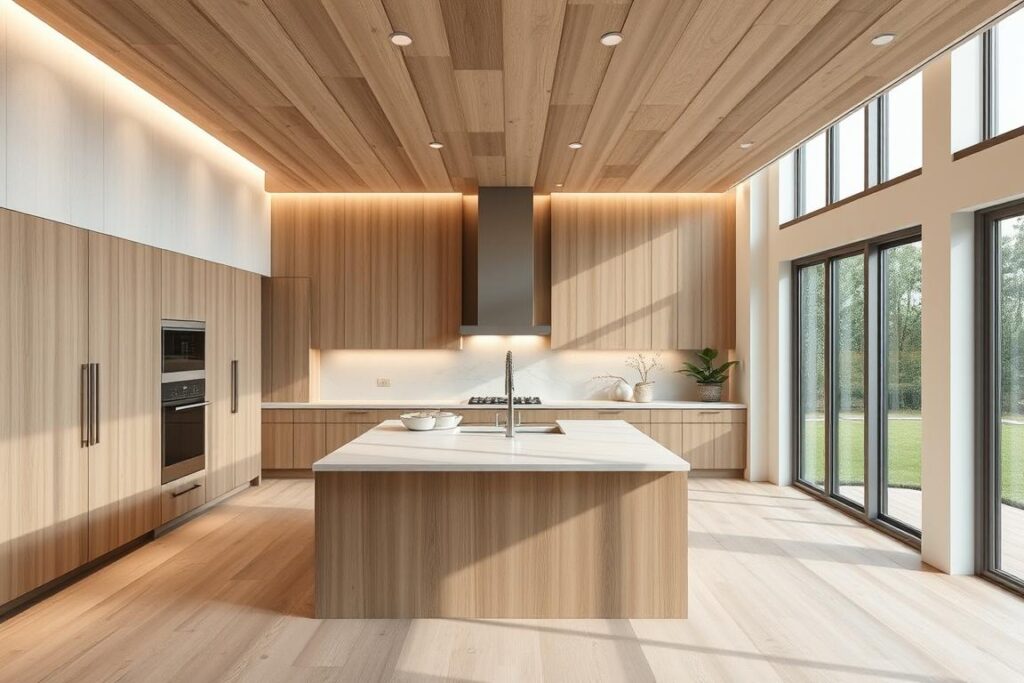
The Role of Textiles in Your Color Palette
Textiles are also important in your kitchen’s look and sound. Fabric-covered acoustic panels can soften sound and add style. Using textiles in your kitchen design makes it look and sound better.
Installing Acoustic Solutions in Your Kitchen
We know how important a quiet and useful kitchen is. When picking acoustic solutions, there are many things to think about. We can guide you in choosing the best materials and designs for your kitchen.
Sound isolation is key in kitchen makeovers. It means using materials and methods to cut down noise. This helps keep the sound in your kitchen and out of other rooms. You can use acoustic panels, sound-absorbing materials, and seal walls and floors to do this.
Best Practices for Soundproofing
To get the best sound isolation, follow these steps:
- Use sound-absorbing panels and insulation in your kitchen.
- Seal any gaps or cracks in walls and floors.
- Install solid-core doors and double-glazed windows.
By following these tips, you can make your kitchen quieter and more useful. Think about what you need and your budget when picking materials and solutions.
Case Studies: Successful Acoustic Kitchen Designs
We’ve learned how important acoustic kitchen design is. It makes spaces comfortable and functional. Now, let’s look at some successful designs, both for homes and businesses.
Key elements include sound-absorbing materials and smart layouts. Also, choosing quiet appliances is crucial. These features help make kitchens great places to be.
A good acoustic kitchen might have:
- Sound-absorbing wall panels to cut down echo
- A smart layout to reduce noise and boost efficiency
- Quiet appliances to keep the background noise down
By using these tips, you can make your kitchen both useful and cozy. Whether you’re starting from scratch or updating, think about acoustic design. It’s key for a kitchen that’s a joy to use.
| Case Study | Acoustic Features | Results |
|---|---|---|
| Residential Kitchen | Sound-absorbing wall panels, quiet appliances | Reduced echo and reverberation, improved overall comfort |
| Commercial Kitchen | Strategic layout, sound-absorbing materials | Improved efficiency, reduced background noise |
Future Trends in Acoustic Kitchen Design
The future of kitchen design is exciting and green. We’ll see smart solutions for sound and energy. Brands like Schweigen are at the forefront with their silent rangehoods.
There’s a big push for eco-friendly kitchens. We’ll use wood certified by FSC and water-saving tech. The colors will also reflect nature, with earthy tones and rich jewel hues.
Technology will play a big role in kitchen design. We’ll see smart appliances and kitchens that encourage socializing. This mix of tech and design will make kitchens better for sound and fun.
FAQ
What is acoustic kitchen design?
Why is acoustic design important in kitchens?
What are the common acoustic challenges in kitchen spaces?
What are the key principles of acoustic design?
What materials can enhance acoustic performance in kitchens?
How does the layout of a kitchen affect its acoustics?
How do kitchen design elements affect acoustics?
How do color schemes influence the acoustics of a kitchen?
What are the best practices for installing acoustic solutions in a kitchen?
What are some examples of successful acoustic kitchen designs?
Source Links
- https://www.mitchcogroup.com/renovation-articles/entertain-with-ease-crafting-a-kitchen-perfect-for-social-gatherings
- https://www.archizy.com/magazines/your-guide-to-design-functional-and-luxury-kitchens
- https://meccinteriors.com/designbites/designing-healthy-kitchens/
- https://www.bluentcad.com/blog/how-acoustics-is-an-integral-part-of-interior-design
- https://www.primacoustic.com/resources/what-is-acoustic-treatment-why-is-it-important/
- https://abstracta.se/story/5-easy-ways-to-improve-the-acoustics-in-your-home/
- https://pdhacademy.com/wp-content/uploads/2017/03/SOUND-ADVICE-FOR-ACOUSTIC-DESIGN-Final-Course.pdf
- https://acousticgeometry.com/restaurant-acoustics/
- https://www.soundproofcow.com/soundproofing-101/architects-soundproofing-guide/?srsltid=AfmBOopOFTck_awovnLASYCMWY7Dh6SOK0sFrtbd8JQ9RD7gEq4XpC46
- https://arktura.com/acoustic-ceiling-systems-that-achieve-both-performance-and-beauty/
- https://www.advance-catering.co.uk/blog/the-importance-of-acoustics-when-designing-a-commercial-kitchen/
- https://www.soundproofcow.com/soundproofing-101/architects-soundproofing-guide/?srsltid=AfmBOoqCdN8vvYXWzIx-2z75RjMUQ4wSOwYZYhSdJyuOXm6KCa_lHN39
- https://www.eastcoastsurfaces.us/blog/enhancing-home-acoustics-the-science-behind-countertop-sound-quality
- https://foyr.com/learn/impact-of-acoustics-in-interior-design
- https://woodupp.com/enhance-your-interior-wall-panels-and-color-choices-for-a-perfect-finish/
- https://design-milk.com/baux-acoustic-panels-make-noise-with-muted-colorways/
- https://theflavorpalette.com/1186/chic-ways-to-integrate-acoustic-panels-into-your-kitchen-design/
- https://www.soundonsound.com/sound-advice/beginners-guide-acoustic-treatment
- https://meccinteriors.com/designbites/5-acoustic-ceiling-treatments-home/
- https://metercube.com/blog/best-tips-for-acoustic-interior-design-for-musicians-room/?srsltid=AfmBOooKrdr_hHcZyRTaYxdqXJyPWdShF9o6G02QX8bcmYHOzMUBBzop
- https://www.acousticsolutions.com/echo-chamber-acoustics-blog/acoustic-design-in-canadian-restaurants
- https://www.slideshare.net/slideshow/building-science-2-a-case-study-on-acoustic-design/84152481
- https://architecturetoday.co.uk/acoustics-case-study-ucl-school-of-management-nicolas-hare-architects-buro-happold/
- https://www.seasonsincolour.com/post/unveiling-the-future-top-10-kitchen-trends-for-2025-that-will-revolutionize-your-culinary-space
- https://commercial.schweigen.com.au/articles/quiet-kitchens-are-the-future
- https://www.pocock.co.uk/news/5-kitchen-trends-for-2024

